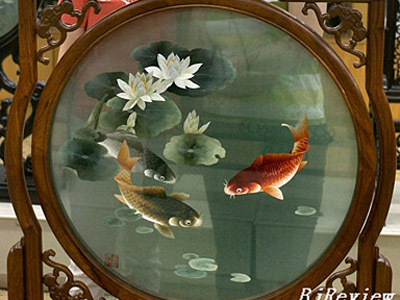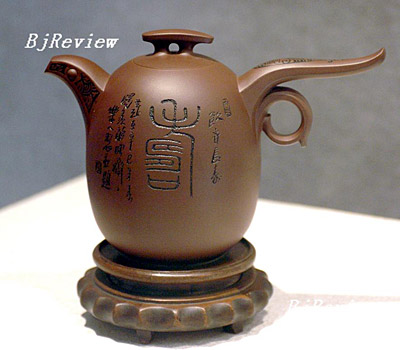|
Xiang Embroidery

Xiang Embroidery, meaning embroidery from Hunan Province, is one of the Four Great Embroideries in China. With a history of more than 2,000 years, it is world famous for its exquisite techniques and unique features. During the long process of development, Xiang Embroidery adopted the techniques used in traditional Chinese painting, as well as the techniques of engraving, calligraphy and embroidery. By the end of the Qing Dynasty (1644-1911), it formed its own unique style and reached its peak. Xiang Embroidery is known for its tiger patterns, which are double-faced with different images and colors on each side of transparent chiffon. With the rapid development of China's market economy, and many people migrating from rural to urban areas, the traditional techniques of Xiang Embroidery is in danger of being lost.
Yixing Ceramics

Yixing Ceramics started in the Song Dynasty (960- 1279) and reached its height in the Ming Dynasty (1368-1644). With a history of more than 600 years, the technique is mainly used in making teapots. The ceramic is made of zisha clay, the best material of antique teapots that can only be found in Yixing, Jiangsu Province. It has become increasingly rare. It is said that zisha clay is more valuable than pearls and jades for the latter can be found anywhere. Zisha teapots merge the advantages of calligraphy, carving and drawing, showing consummate handmade techniques. Zisha Ceramics has various shapes and designs, with a variety of decoration, such as engraving, hollowing, carving, inlay and painting applied on the wares. However, with the introduction of industrialization, the teapots can be made in large scale but lower quality, with over-exploitation and abuse of the rare clay. Preserving this technique is of vital importance.
Ansai Waist Drum Dance

Ansai, a county located in Shaanxi Province, became famous for its waist drum dance, large-scale folk event that dates back to the Spring and Autumn Period (770 B.C.-476 B.C.) in Chinese history and is popular on the Loess Plateau in central China. Farmers there celebrate festivals by staging a large-scale Ansai Waist Drum Dance. The number of drummers performing together can reach from 500 to 1,000 and the energy of performers is a sight not to be forgotten. In 1996, Ansai County was named "the hometown of the Chinese waist drum." Today, Ansai Waist Drum Dance is facing a big challenge with the decreasing number of performers, even in Ansai County itself. Urgent attention is needed to ensure continuity of this art form.
(Source: http://www.ihchina.cn/main.jsp) |
